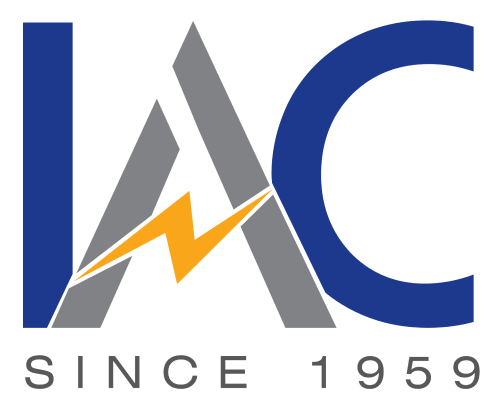In the evolving landscape of power transmission, the demand for efficient and reliable solutions is paramount. High-Temperature Low-Sag (HTLS) conductors have emerged as a vital innovation in addressing the challenges faced by traditional conductors.
These advanced conductors are designed to operate at higher temperatures and with reduced sag, offering numerous benefits for modern power grids.
This blog delves into the purpose of HTLS conductors, their unique characteristics, and their diverse applications.
What Are HTLS Conductors?
HTLS conductors are a class of overhead power line conductors specifically engineered to handle higher operating temperatures with minimal sag compared to conventional conductors. Traditional aluminum conductors, such as Aluminum Conductor Steel Reinforced (ACSR). It tends to sag significantly under high temperatures due to the expansion of materials. This sagging can lead to reduced clearance, posing safety risks and limiting the amount of power that can be transmitted.
On the other hand, HTLS conductors are designed to operate efficiently at temperatures up to 250°C or higher, compared to the typical 90°C to 150°C range for conventional conductors. This increased temperature tolerance is achieved through the use of advanced materials and innovative designs, such as aluminum-zirconium alloys, thermal-resistant aluminum alloys, and composite cores made from carbon fibers or other high-strength materials.
Advantages of HTLS Conductors
1. Increased Current Carrying Capacity
One of the primary benefits of HTLS conductors is their ability to carry significantly more current than traditional conductors. This is due to their higher operating temperatures, which allow for greater thermal capacity. As a result, power utilities can transmit more electricity over existing infrastructure without the need for extensive upgrades or new transmission lines.
2. Reduced Sag
The low-sag characteristic of HTLS conductors is crucial for maintaining safe clearance distances between power lines and the ground or other structures. Reduced sag not only enhances safety but also allows for more efficient use of existing transmission corridors. This is particularly beneficial in urban areas where space is limited and obtaining new right-of-way can be challenging and costly.
3. Enhanced Efficiency and Reliability
HTLS conductors offer improved efficiency and reliability in power transmission. By operating at higher temperatures, these conductors reduce line losses, which can lead to significant cost savings over time. Additionally, the materials used in HTLS conductors are more resistant to environmental factors such as corrosion and mechanical stress, resulting in a longer lifespan and reduced maintenance requirements.
Applications of HTLS Conductors
1. Upgrading Existing Transmission Lines
One of the most common applications of HTLS conductors is in upgrading existing transmission lines. As the demand for electricity continues to grow, utilities face the challenge of increasing capacity without the need for new infrastructure. By replacing traditional conductors with HTLS conductors, utilities can significantly boost the capacity of existing lines, enhancing grid reliability and meeting the rising demand for power.
2. Integration of Renewable Energy Sources
The integration of renewable energy sources, such as wind and solar power, into the grid presents unique challenges. These sources are often located in remote areas, requiring long-distance transmission to urban centers. HTLS conductors are well-suited for this task, as they can handle the high current levels associated with renewable energy generation and transmit it efficiently over long distances.
3. Addressing Urban Transmission Challenges
In densely populated urban areas, acquiring new right-of-way for additional transmission lines is often impractical. HTLS conductors provide a solution by enabling utilities to upgrade existing lines and increase capacity within the same footprint. This minimizes disruption to urban environments and reduces the need for costly and time-consuming infrastructure projects.
4. Enhancing Grid Resilience
Grid resilience is a critical concern in the face of extreme weather events and other disruptions. HTLS conductors contribute to grid resilience by offering higher thermal capacity and reduced sag, which helps prevent outages and maintain power delivery during peak demand periods or adverse conditions. Their durability and resistance to environmental stressors also enhance the overall reliability of the transmission network.
Future Prospects and Considerations
As the global energy landscape continues to evolve, the role of HTLS conductors is expected to grow. Their ability to enhance transmission capacity, improve efficiency, and support the integration of renewable energy sources positions them as a key component in the modernization of power grids.
However, there are considerations to keep in mind. The initial cost of HTLS conductors can be higher than traditional conductors, which may pose a barrier to widespread adoption. Utilities must also evaluate the compatibility of HTLS conductors with existing infrastructure and ensure proper installation and maintenance practices to fully realize their benefits.
Wrapping It Up
HTLS conductors represent a significant advancement in power transmission technology. It offers a range of benefits that address the limitations of traditional conductors. Their increased current carrying capacity, reduced sag, and enhanced efficiency make them an invaluable asset for modern power grids.
As utilities strive to meet the growing demand for electricity and integrate renewable energy sources, HTLS conductors will play a crucial role in ensuring a reliable, efficient, and resilient power transmission network. By embracing this innovative technology, IAC Electricals, HTLS conductor fittings and accessories manufacturers in India can build a more sustainable and robust energy future.






